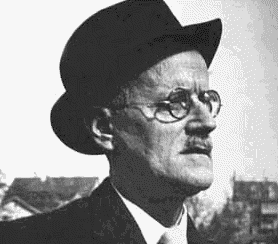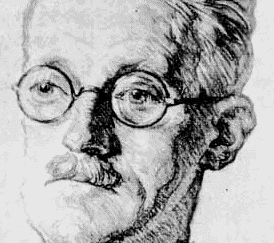
Joyce's Ulysses

Joyce took the Odissey and tarnslated the action into eighteen episodes from a day in the lives of three people living in Dublin. Each episode is based on a parallel with the homeric poem. Ulysses is a character called Leopold Bloom, he is a simple man that represents the average individual; Penelope finds her reflection in Moly Bloom; Stephen Dedalus stands for Telemachus and he is in search of a father figure because he has quarrelled with his own father. Bloom suffers from the separation from his own father. Bloom suffers from the separation from his wife because he and Molly have drifted apart and she has taken a lover. There few incidents in the book, because most of the action goes on in the minds of the characters, logically, in particular in the minds of leopold Bloom. This is a part of the experimentation carried out by Joyce, which highlighted the potencialities of the new technique known as “stream of consciousness”. Joyce wanted to convey thought as it forms in the mind, with a pre-verbal thought, without the narrator’s mediation. This involved a twisted and distrupted syntax, incomplete sentences and the swift passing from one idea to another. Often we say that “ulysses” by Joyce is a form of prose based on the “mythical method”; the narration develops from tyhe progress made by psychology, ethnology and anthropology. This method allows the author to make a parallel with the Odissey and provided the book with a symbolic, cross-temporal, meaning. Homer’s poem is used to enlarge by resemblance and difference the actions and people of a Dublin day, to express the universal in the particular. Joyce wants to create a new form of realism. We can say that “Ulysses” summarizes all the features of Joyce’s work in general and this work is the climax of the same Joyce’s work. Joyce knows very well Dublin and he perfectly knows every location in the novel; so, we can say that Dublin represents a character in this novel. “Ulysses”, like “Odyssey”, is the story of a journey, the return of the exile after the symbolic confrontation with death. This work can be divided into three parts embodying the three main characters: Stephen Dedalus, Leopold Bloom and Molly Bloom (imitating the three parts of the “Odyssey”). These three main characters are more than simple individuals: in fact, they represent two different aspects of human nature. Stephen is pure intellect and embodies every young man seeking maturity; Molly Bloom stands for flesh and she totally identifies herself in fecundity and sensual nature; Mr. Bloom is a sort of synthesis of the extremes that is everybody, the whole of mankind. We have to say that the “stream of consciousness” is a cinematic technique with the literary equivalents of close-ups, flashbacks, question and answers, dramatic dialogue. The juxtaposition of the events with a quite randomic order enables the author to render his characters’ inner life craeting this new connotation by using the so called “collage technique”. We can see a new language rich in puns, juxtapositions, paradoxes, interruptions, false clues. Symbols are very important. We can define this work a realistic-symbolic work. Analyzing “Ulysses” we have seen th main features of Joyce’s work and we have to say that Joyce is a modernist writer too. His themes are re-worked in a way that give a determinant importance to “narrative”. The facts become confused and they are explored from different points of view simultaneously; facts are presented as “clues”, not through the voice of an omniscent narrator. We can see the conception of the “clue” connected with the figure and the myth of Ulysses like in the phylosophy of Bergson.
